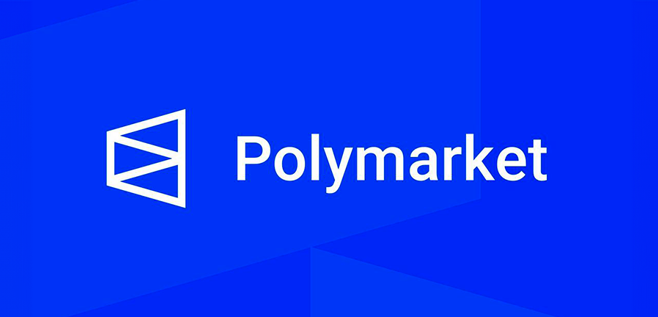Published: 02 May 2024
The Potential of Wrapped Tokens for Ethereum-Based Prediction Markets

In the ever-evolving world of blockchain and cryptocurrencies, prediction markets have emerged as a fascinating use case, combining the power of decentralized networks with the wisdom of the crowd. But what exactly are prediction markets? In simple terms, they are platforms that allow individuals to make predictions on the outcome of future events, using real money. These markets leverage the collective intelligence of participants to generate accurate probabilities, often outperforming traditional methods of forecasting.
When it comes to prediction markets, Ethereum has taken center stage. As the second-largest cryptocurrency by market capitalization, Ethereum's smart contract capabilities have enabled the creation of decentralized prediction market platforms, such as Augur and Gnosis. These platforms offer a censorship-resistant and transparent environment for users to participate in prediction markets, fostering innovation and growth.
Enter wrapped tokens – a novel concept that has gained significant traction in the blockchain space. Wrapped tokens represent a cryptocurrency or token from one blockchain that has been "wrapped" to be used on another blockchain. For instance, Wrapped Bitcoin (WBTC) is a tokenized version of Bitcoin that can be used on the Ethereum network, unlocking a host of new use cases and opportunities.
In this article, we'll delve into the potential of wrapped tokens for Ethereum-based prediction markets, exploring how these innovative assets could reshape the landscape and drive further adoption.

Understanding wrapped tokens
Wrapped tokens have emerged as a powerful tool in the blockchain ecosystem, bridging the gap between different networks and unlocking new possibilities for users and developers alike. But what exactly are wrapped tokens, and why are they important?
Definition and purpose of wrapped tokens
In essence, a wrapped token is a tokenized version of a cryptocurrency or asset from one blockchain, which is designed to be used on a different blockchain. The primary purpose of wrapped tokens is to enable interoperability between blockchains, allowing users to access new platforms, decentralized applications (dApps), and services that were previously unavailable to them.
How wrapped tokens work
To create a wrapped token, the original asset is locked in a smart contract, which then mints an equivalent amount of the wrapped token on the target blockchain. This process is typically managed by a custodian or decentralized autonomous organization (DAO) responsible for ensuring the security and integrity of the wrapped tokens.
When users want to redeem their wrapped tokens for the original asset, they can send the wrapped tokens back to the smart contract, which then releases the corresponding amount of the original asset. This process ensures that wrapped tokens remain fully backed by the underlying asset at all times.
Examples of popular wrapped tokens
Some popular examples of wrapped tokens include:
- Wrapped Bitcoin (WBTC)
An ERC-20 token representing Bitcoin on the Ethereum network, WBTC allows users to leverage Bitcoin's value and liquidity within Ethereum's vast ecosystem of dApps and DeFi platforms.
- Wrapped Ether (WETH)
An ERC-20 version of Ethereum's native currency, Ether, WETH is widely used in decentralized exchanges (DEXs) and other Ethereum-based platforms to facilitate seamless trading and interaction with smart contracts.
- RenBTC (renBTC)
Another tokenized version of Bitcoin on Ethereum, renBTC is backed by the Ren protocol, which focuses on providing interoperability between various blockchain networks.
By enabling interoperability and unlocking new use cases, wrapped tokens have become an essential component of the blockchain ecosystem. In the next section, we'll explore how wrapped tokens can be leveraged in Ethereum-based prediction markets to enhance liquidity, accessibility, and user experience.

The role of Ethereum in prediction markets
Ethereum has become a cornerstone of the prediction market landscape, thanks to its unique features and capabilities that enable decentralized, secure, and transparent platforms. In this section, we'll discuss Ethereum's current role in prediction markets and the benefits it offers.
Explanation of Ethereum's current role in prediction markets
Ethereum's smart contract functionality has been instrumental in the development of decentralized prediction market platforms, such as Augur, Gnosis, and Omen. These platforms leverage Ethereum's blockchain to facilitate trustless and transparent betting on various events, from sports matches and elections to weather forecasts and cryptocurrency price movements.
Benefits of using Ethereum for prediction markets:
- Smart contracts
Ethereum's smart contract capabilities allow for the creation of self-executing agreements that automatically enforce the rules and outcomes of prediction markets. This ensures that bets are settled fairly and accurately, without the need for intermediaries.
- Decentralization
By building prediction markets on Ethereum's decentralized blockchain, platforms can ensure censorship resistance and maintain an open, permissionless environment for users. This allows participants from all around the world to access prediction markets and contribute their insights without fear of censorship or interference.
- Security and transparency
Ethereum's blockchain provides a secure and transparent foundation for prediction markets, ensuring that all transactions and activities are recorded on an immutable ledger. This promotes trust among users and makes it difficult for bad actors to manipulate the system.
- Interoperability
Ethereum's extensive ecosystem of dApps and DeFi platforms enables seamless integration between prediction markets and other services, such as decentralized exchanges and lending protocols. This allows users to easily move funds and access various financial tools within the Ethereum network.
- Scalability
As Ethereum continues to evolve and address scalability challenges through solutions like Ethereum 2.0 and layer-2 platforms, prediction markets built on the network will benefit from increased transaction speed and reduced fees, further enhancing user experience.
Ethereum's unique features and capabilities have made it an ideal foundation for prediction markets, fostering innovation and growth in the space. In the next section, we'll explore how wrapped tokens can further enhance the potential of Ethereum-based prediction markets.

The intersection of wrapped tokens and prediction markets
The combination of wrapped tokens and Ethereum-based prediction markets presents a powerful opportunity to enhance the functionality and accessibility of these platforms. In this section, we'll discuss how wrapped tokens can be used in prediction markets and the benefits they bring to the table.
How wrapped tokens can be used in prediction markets
- Cross-chain interoperability
Wrapped tokens enable users to bring the value and liquidity of various cryptocurrencies, such as Bitcoin, into Ethereum-based prediction markets. This allows participants to bet using their preferred assets and opens up prediction markets to a broader user base.
- Seamless integration with DeFi
Wrapped tokens can be easily integrated with Ethereum's DeFi ecosystem, enabling users to leverage services like decentralized exchanges, lending platforms, and yield aggregators in conjunction with prediction markets. This creates new opportunities for users to maximize their returns and engage in more sophisticated trading strategies.
Benefits of using wrapped tokens in prediction markets
- Enhanced liquidity
By allowing users to bring various cryptocurrencies into Ethereum-based prediction markets, wrapped tokens can significantly increase the liquidity of these platforms. This leads to better price discovery, tighter spreads, and a more efficient market overall.
- Improved accessibility
Wrapped tokens enable users who prefer holding assets other than Ethereum to participate in prediction markets, attracting a more diverse user base and fostering greater adoption.
- Reduced counterparty risk
As wrapped tokens are backed by the underlying assets in a trustless and transparent manner, users can engage in prediction markets without worrying about counterparty risk associated with centralized platforms.
- New use cases and innovations
The integration of wrapped tokens with prediction markets can lead to the development of new use cases and innovative platforms that cater to the unique needs and preferences of different user segments.
By leveraging the power of wrapped tokens, Ethereum-based prediction markets can unlock new opportunities, enhance liquidity, and improve accessibility for users. This intersection has the potential to drive further growth and innovation in the prediction market landscape, creating a more vibrant and dynamic ecosystem for all participants.

Practical examples: a look at prediction markets employing wrapped tokens
To better understand the potential of wrapped tokens in Ethereum-based prediction markets, let's examine a few case studies that highlight platforms utilizing these tokens and analyze their successes and challenges.

Case study 1: Polymarket
Polymarket is a decentralized prediction market platform built on Ethereum that focuses on real-world events, such as politics, sports, and current affairs. The platform supports various cryptocurrencies, including wrapped tokens like WBTC, enabling users to participate in prediction markets using their preferred assets.
Successes:
- Polymarket has gained significant traction due to its user-friendly interface, diverse range of markets, and support for multiple cryptocurrencies, including wrapped tokens.
- The platform's focus on real-world events has attracted users seeking to leverage their knowledge and insights in niche markets.
Challenges:
- Like other decentralized prediction markets, Polymarket faces regulatory uncertainty, as laws and guidelines surrounding these platforms continue to evolve.
- Ensuring the accuracy and reliability of market outcomes remains an ongoing challenge, as the platform relies on decentralized oracles and community consensus.

Case study 2: Omen
Omen is another Ethereum-based prediction market platform that allows users to create custom markets for any event and supports a wide range of cryptocurrencies, including wrapped tokens. Omen is built on the Gnosis protocol, leveraging its infrastructure to provide a scalable and user-friendly prediction market experience.
Successes:
- Omen's custom market creation feature has fostered a vibrant community of users, who have created markets for various niche events and topics.
- The platform's integration with the Gnosis protocol has enabled it to benefit from the protocol's ongoing development and improvements.
Challenges:
- Omen faces similar regulatory challenges as other decentralized prediction markets, with the added complexity of custom market creation, which could potentially lead to the creation of markets that violate laws or regulations.
- Ensuring a balanced and fair market environment can be challenging, as some custom markets may have limited liquidity or suffer from manipulation attempts.
These case studies demonstrate the potential of wrapped tokens in Ethereum-based prediction markets, showcasing how platforms like Polymarket and Omen have leveraged these tokens to enhance user experience, liquidity, and accessibility. However, they also highlight the challenges that these platforms must overcome, including regulatory uncertainty and ensuring market integrity. As the prediction market landscape continues to evolve, wrapped tokens are likely to play an increasingly important role in shaping the future of these platforms.

The future of wrapped tokens in prediction markets
As wrapped tokens and Ethereum-based prediction markets continue to evolve, it's essential to consider the potential growth, developments, and challenges that lie ahead. In this section, we'll explore some predictions for the future of wrapped tokens in prediction markets and discuss potential challenges and solutions.
Predictions for growth and development
- Increased adoption
As more users recognize the benefits of wrapped tokens in prediction markets, their adoption is likely to grow, leading to more diverse and liquid markets.
- Expansion of supported assets
Prediction market platforms may start supporting a wider range of wrapped tokens, enabling users to participate with an even broader array of cryptocurrencies and assets.
- Integration with emerging technologies
The integration of wrapped tokens with other emerging technologies, such as layer-2 scaling solutions and cross-chain interoperability protocols, could further enhance the performance and accessibility of prediction markets.
- New platforms and innovations
The growing popularity of wrapped tokens in prediction markets may spur the development of new platforms and innovative use cases, catering to the unique needs and preferences of various user segments.
Potential challenges and solutions
- Regulatory hurdles
As prediction markets and wrapped tokens gain traction, they may face increased regulatory scrutiny. Platforms must stay compliant with evolving laws and guidelines to ensure their long-term viability. Collaborating with regulators and implementing robust KYC/AML measures could help address these challenges.
- Scalability and gas fees
Ethereum's scalability limitations and fluctuating gas fees can impact the user experience on prediction market platforms. Implementing layer-2 scaling solutions, such as Optimistic Rollups or ZK-Rollups, and exploring alternative blockchain networks could help mitigate these issues.
- Market integrity and manipulation
Ensuring market integrity and preventing manipulation remains a critical challenge for prediction markets. Platforms must invest in robust security measures, decentralized oracle solutions, and community-driven governance models to maintain a fair and transparent environment.
- User education
Educating users about the benefits and potential risks associated with wrapped tokens and prediction markets is crucial for driving adoption and fostering a responsible user base. Platforms should prioritize user education and provide resources to help users make informed decisions.
The future of wrapped tokens in prediction markets holds great promise, with potential developments that could significantly enhance user experience, liquidity, and accessibility. By addressing the challenges and implementing effective solutions, prediction markets leveraging wrapped tokens can continue to thrive and push the boundaries of innovation in the blockchain ecosystem.

Conclusion
Wrapped tokens have emerged as a powerful tool for enhancing the functionality and accessibility of Ethereum-based prediction markets. By enabling cross-chain interoperability and seamless integration with the DeFi ecosystem, wrapped tokens have the potential to unlock new opportunities, improve liquidity, and attract a more diverse user base to prediction markets.
The intersection of wrapped tokens and Ethereum-based prediction markets represents an exciting frontier in the blockchain ecosystem. As both technologies continue to evolve and mature, we can expect to see further innovation, adoption, and integration, shaping the future of prediction markets and the broader crypto landscape.
The potential of wrapped tokens in Ethereum-based prediction markets is vast, offering a myriad of benefits and opportunities for users, developers, and platforms alike. By embracing this potential and addressing the challenges that lie ahead, the prediction market industry can continue to flourish, driving growth and innovation in the world of decentralized finance and beyond.

 Get RateX Pro
Get RateX Pro

 26 Apr 2024
26 Apr 2024


